Confessions of a Plant Killer
Dear fellow gardener,
I’m a plant killer. Certainly, not intentionally. I’ve been gardening for decades and have grown thousands of plants – trees, shrubs, vines, perennials, succulents, edibles, houseplants, you name it. And though loathe to admit it, I’ve killed my fair share. Mind you, the plants I terminate are desirable ones, things I love and want to grow. I don’t seem to have the same deadly luck with Bermuda grass, wild blackberries, or other weeds!
Some of the fatalities, especially early in my horticultural endeavors, were largely from lack of knowledge. There wasn’t today’s bounty of readily accessible how-to information; so much of my learning came from trial and error. But there were plenty of senseless, avoidable losses. Over the course of my gardening lifetime, I’ve developed my “Top Ten Ways to Kill Plants You Love.” These are surefire practices to avoid -- whether you’re a garden newbie, a certified green thumb, or even a Master Gardener like me.
Happy gardening,
An anonymous Master Gardener
Top ten ways to kill plants you love
Number Ten - Forget the support
Many plants need something to cling to, wrap around, or help stay upright. Without adequate support, the plants may not be able to maintain the weight of the plant itself. Take, for instance, the tomato plant, so laden with hefty fruit that the main stem broke because of the undersized, rather wimpy tomato cage I’d used. Or the delicate foliage of a prized clematis broken at its base by busy squirrels (yes squirrels!) before being trained on a trellis. Learn more about staking and other tips for caring for plants.
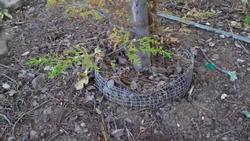
Planting everything in wire cages can be an effective deterrent to destructive gophers, but it’s a lot of work, and every now and then, plants have made it into the ground without it. When a plant is lying prone on the ground with absolutely no roots, like the gorgeous mature camellia at the peak of bloom, it’s clear the gophers got it. On a smaller scale, plenty of tender basil seedlings have vanished overnight when not adequately protected from marauding snails and slugs. Learn more about gophers, snails and slugs, and other pests and problems.
Number Eight – Over-zealous pruning
Generally, we prune trees and woody shrubs to reduce size, encourage shape, and eliminate damaged, diseased, or dead material. If plants get out of control size-wise, then pruning may be more dramatic. But you can overdo it to a point where the plant may not be able to recover. Alas, that was my experience with a rambling rose that was about to topple a fence, and my pruning shears took off more than the “suggested” one third of the plant. That rose is just a memory. Learn more about pruning.
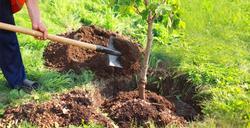
Giving your plants the best possible start in a new location begins by providing adequate drainage, healthy soil, and planting at the right level (the root crown level with or slightly above surrounding soil). Planting too deep favors root and crown diseases while planting too shallow can lead to root damage from exposure and excessive drying. I planted a young magnolia tree in an area where the drainage wasn’t optimum and with the top of the root ball at the soil level. Not having planned for settling, the tree ended up below grade where water collected, and yes, within a couple of years, the tree sadly succumbed to root rot. Learn more about planting.
Number Six – Impulse buying
Have you ever walked into a nursery or home improvement store and been captivated by a beauty you knew nothing about, but just had to have? I’ll find a place for it you mutter to yourself because it’s just too pretty to pass up. When you can’t find any cultural information on how to care for it, it gets plunked in an inappropriate spot and ultimately kicks the bucket. Don't worry, you're not alone; I've done this, too. Learn more about shopping for plants.
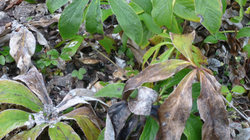
I know not to plant tender seedlings or transplants until after the threat of frost, which, depending on your Marin microclimate, can be as late as the middle of May. But I just HAD to have those tomatoes in the ground for Easter (early April that year). And wouldn’t you know it? One of those late-season blasts from the arctic turned those little plants to black mush overnight! Learn more about frost.
Number Four – Wrong plant, wrong place
Have you heard about “right plant, right place"? Making sure that the plants you choose are appropriate to the environment they’ll be growing in? I didn’t heed this advice when I designed a new garden and planted a dozen birch trees. Fast forward a decade and nearly all are history. My microclimate’s intense summer heat and limited water resulted in stressed trees that were prime targets for an insect pest that did them in. Had I known how thirsty birch trees were, I never would have planted them. That was a hard (and expensive) lesson to learn. Learn more about considerations when choosing plants.
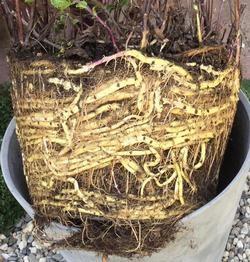
When shopping for trees and shrubs, bigger is not always better. Ideally you want a container-grown plant with a well-established root system. You don't want a plant with a mass of roots circling near the outside surface of the container that may prevent it from getting established once planted. But I couldn’t pass up that half-price tree in the bargain corner of the nursery. Once in the ground, it just languished – never grew much, and became yet another victim of insect pests. Check out these tips for successful trips to the nursery.
Number Two – Dry them or fry them
Plants need water, and one of the easiest ways to knock off your plants is not providing moisture when it’s needed. I ignored the symptoms some roses exhibited that showed a lack of water. It was too late when I discovered the drip emitters were plugged and the soil was bone dry. Or the specimen shrub in a container that seemed to shrivel up before my eyes. It was diligently hand-watered every day and clear that water came out of the bottom of the pot. Turns out the plant was pot-bound; the root ball had pulled away from the sides of the pot and all that water was running right down the outside of the root ball, never really getting to the plant’s roots. Learn more about symptoms of plant stress.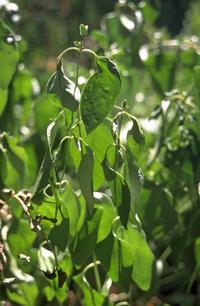
Number One – Drown them
Without a doubt, this is the easiest, most efficient way to kill beloved plants. Plants need air in their roots to thrive. Add too much water and you suffocate them. Excess water provides the perfect environment for root rot that can kill a plant very quickly. I’ve done this to way too many plants – whether indoors with orchids and African violets or outside with exquisite azaleas at the peak of bloom in decorative pots. They start to look a little stressed, and you dump more water on them – that only speeds up their demise. Learn more about too much or too little water in your soil.
Need some personalized plant help?
Still not sure why a plant you love isn't thriving? We're here to help. Here's how you can visit the UC Marin Master Gardener Help Desk without leaving home.
